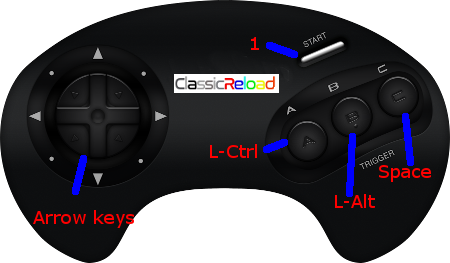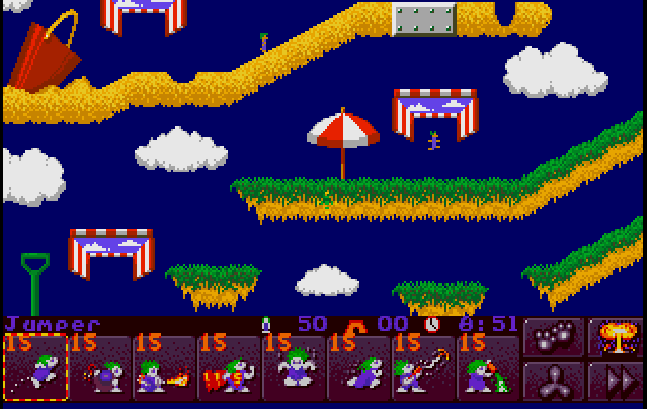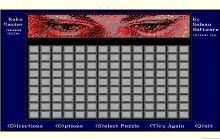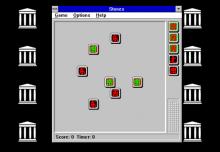Lemmings 2: The Tribes

How to play Lemmings 2: The Tribes
Each game uses different controls, most Amiga games use both mouse and keyboard.
Lemmings 2: The Tribes Description
Lemmings 2: The Tribes is a Genesis game released in 1993, as the first real sequel to the popular puzzle game Lemmings. As the original, it was developed by DMA Design and published by Psygnosis. The gameplay remained mostly the same as the original game, requiring you to lead all the lemmings to their exit by giving them the appropriate "skills".
Numerous changes and additions were made in this sequel. First of all, there was an introduction movie explaining the storyline of the game. Secondly, there were now many, many more skills available to give to the lemmings, unlike the eight in the original game. There was still a total of 120 levels, but in this game they were divided into ten levels for each of the twelve tribes.
Lemmings 2 was not quite as popular as Lemmings, and was not ported to other systems as much as the original game was. Despite this, it was well received and considered by many as a worthy sequel. One apparently common complaint was that the many different skills were too confusing to players, despite the game's "Practice Mode".
Storyline
Once upon a time, the twelve lemming tribes of Lemming Island lived happily and peacefully. One day, however, a great darkness fell upon their land, as foretold in an ancient prophecy. This prophecy told that the only way the lemmings could survive was by evacuating their island, using the power of the Lemming Talisman. This talisman consisted of twelve pieces, one owned by each tribe. With the help of the Guide that has helped them before, all lemmings must now reach the center point of their island in order to escape their doom.
Gameplay
The gameplay in Lemmings 2 differs from the original in the following ways:
As mentioned before, there are many more (over 60) skills available in the game, although no more than eight of each are selectable in each level. Some of the skills are similar to the original ones (like digging and building variants), others are all new (several flying skills, for example). One interesting skill is the "entertainer" which will play a musical instrument and have nearby lemmings do a dance. The instrument and dances they do vary by tribe.
A practice mode is added instead of the two-player mode. In this mode, any type of skill available can be selected for the player to experiment with. There is a choice of four different practice levels.
Each tribe's levels can be started at any time, and progress can be saved from the main menu. The player starts out with 60 lemmings for each tribe, but only one lemming needs to make it to an exit in order to progress to next level. The amount saved will then be the amount left in the next level. All lemmings possible (usually 60) need to survive all levels to actually complete the game. The player will be rewarded with a bronze, silver or gold medal, depending on how many lemmings are saved in the level. This will also dictate the type of the talisman part received once all the tribe's levels are completed.
Each tribe has its own graphics set, its own music track, its own "traps" and its own exit animations. Skills however, are not limited to a tribe. The twelve tribes are: Classic, Circus, Cavelem, Shadow, Space, Outdoor, Beach, Sports, Egyptian, Highland, Arctic and Medieval.
A new fast forward button and fan button have been added to the controls. The fast forward replaces the release rate button in the original game, which would let you release more lemmings at a time. Now the whole game is sped up, so you can skip longer waiting times. The fan button turns the cursor into a fan, which is used to push around any flying lemmings or to affect wind-powered elements.
Smaller additions include:
Instead of just dying, lemmings can now hurt themselves, taking a second to get back up to continue walking.
Trampolines will let lemmings jump and bounce about.
Cannons and catapults in levels will launch a lemming away.
Levels can span vertically as well as horizontally (mostly because of the flying skills).
Lemmings with permanent skills have their colours switched for easier identification.

Lemmings 2: The Tribes - additional information
















